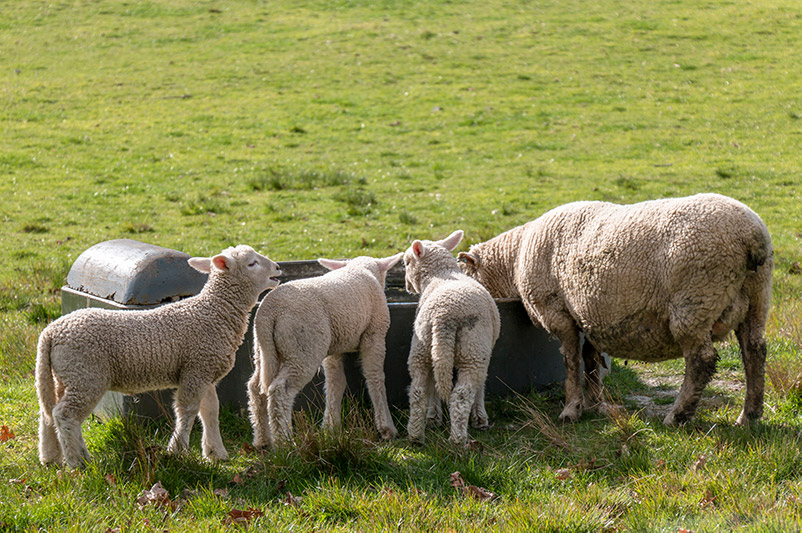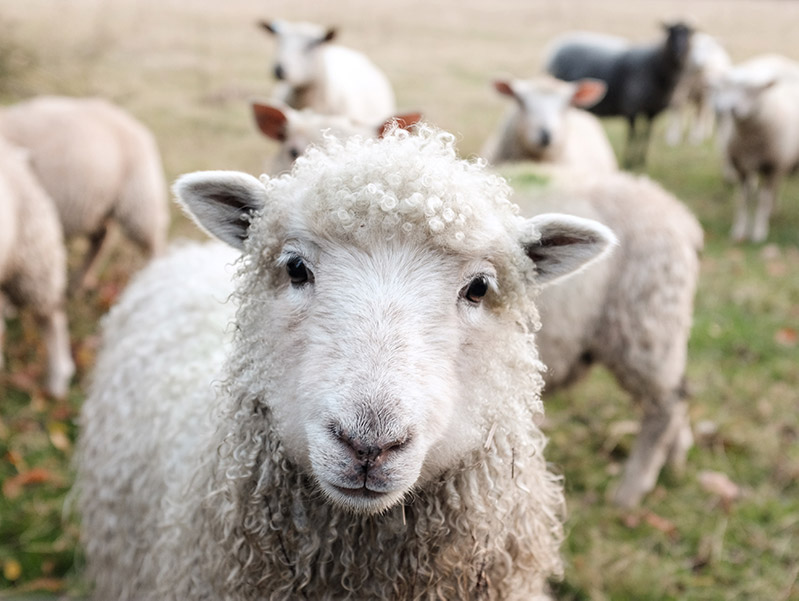Section 2 | Anthelmintic Resistance in Sheep & Goats
Industry
Page 10 /
Using Anthelmintics Appropriately
It is imperative that animals are treated with anthelmintics appropriately to ensure maximal effect and prevent or slow the development of resistance. The development of anthelmintic resistance can be slowed or prevented if about ⅓ (30%) of animals are NOT treated.
Some critical tips to consider prior to using anthelmintics include:
- Weighing animals to ensure an adequate dose is being provided
- Calibrating automatic syringes or drench guns frequently
- Placing drench guns at the back of the animal’s mouth
- Use oral drenches instead of injectable products
- Use combination dewormers

Monitoring and Treating Animals Selectively
To preserve the effectiveness of anthelmintics, animals should be treated only when they need it. This can be accomplished by using the Five Point Check and confirming parasitism with fecal egg counts.
There are several high risk times where evaluation of the group for GIN is valuable:
- Adults prior to parturition or in early lactation
- The goal is to prevent the contamination of the pasture housing youngstock, as adults can serve as a large source of GIN
- Repeat monitoring throughout the grazing season, especially youngstock in midsummer
- To control gastrointestinal parasitism, animals need to be routinely monitored throughout the summer by measuring fecal egg counts or using the Five Point Check
- It has been shown that approximately 30% of lambs are responsible for 70% of the total egg production, which means there is a lot of animal-to-animal variability in how eggs are shed
- Monitor after treatment
- Fecal egg counts should be completed every 4-6 weeks after treatment to ensure early detection of high levels of GIN eggs for targeted treatment
- If there is no response to treatment, animals should be resampled 14 days after the anthelmintic is given to test for treatment failure
- There are many other reasons for failure of treatment, including the presence of other diseases with similar clinical signs. Work with your veterinarian if this occurs to develop a new protocol for deworming
Quarantining and Treating New Introductions
Newly arrived animals can serve as a source of infection for the entire herd/flock. It is prudent to treat all new animals when in isolation and prevent turnout for at least 48 hours to allow passage of eggs. Following treatment, quarantine, and isolation, newly acquired animals should be turned out onto a contaminated pasture. Work with your veterinarian to determine the best protocol for new introductions on your farm.

Investigating Treatment Failure
If you see signs of parasitism despite deworming, you should investigate why this has occurred. Your animals may be experiencing other conditions with similar clinical signs to parasitism. They could also have anthelmintic resistance. Involve your veterinarian to determine the reasons for the treatment failure and use their knowledge to develop new deworming protocols using the 5 Rs of Antimicrobial Stewardship.
We sat down with Dr. Andrew Peregrine of the Department of Pathobiology at the Ontario Veterinary College. He discusses his research investigating anthelmintic resistance in the treatment of Haemonchus contortus in sheep flocks in Ontario
Anthelmintic resistance is becoming a common issue on many herds/flocks across Ontario. Thus, it is important to take action to reduce the chance of resistance occurring. Selective treatment at the right time is critical to prevent anthelmintic resistance. Work with your veterinarian to develop a parasite control program for your flock.
For more detailed information, see:
Handbook for the Control of Internal Parasites in Sheep & Goats
References
- Fleming, S.A., T. Craig, R.M. Kaplan, J.E. Miller, C. Navarre, and M. Rings. 2006. Anthelmintic resistance of gastrointestinal parasites in small ruminants. J. Vet. Intern.
Med. 20:435-444